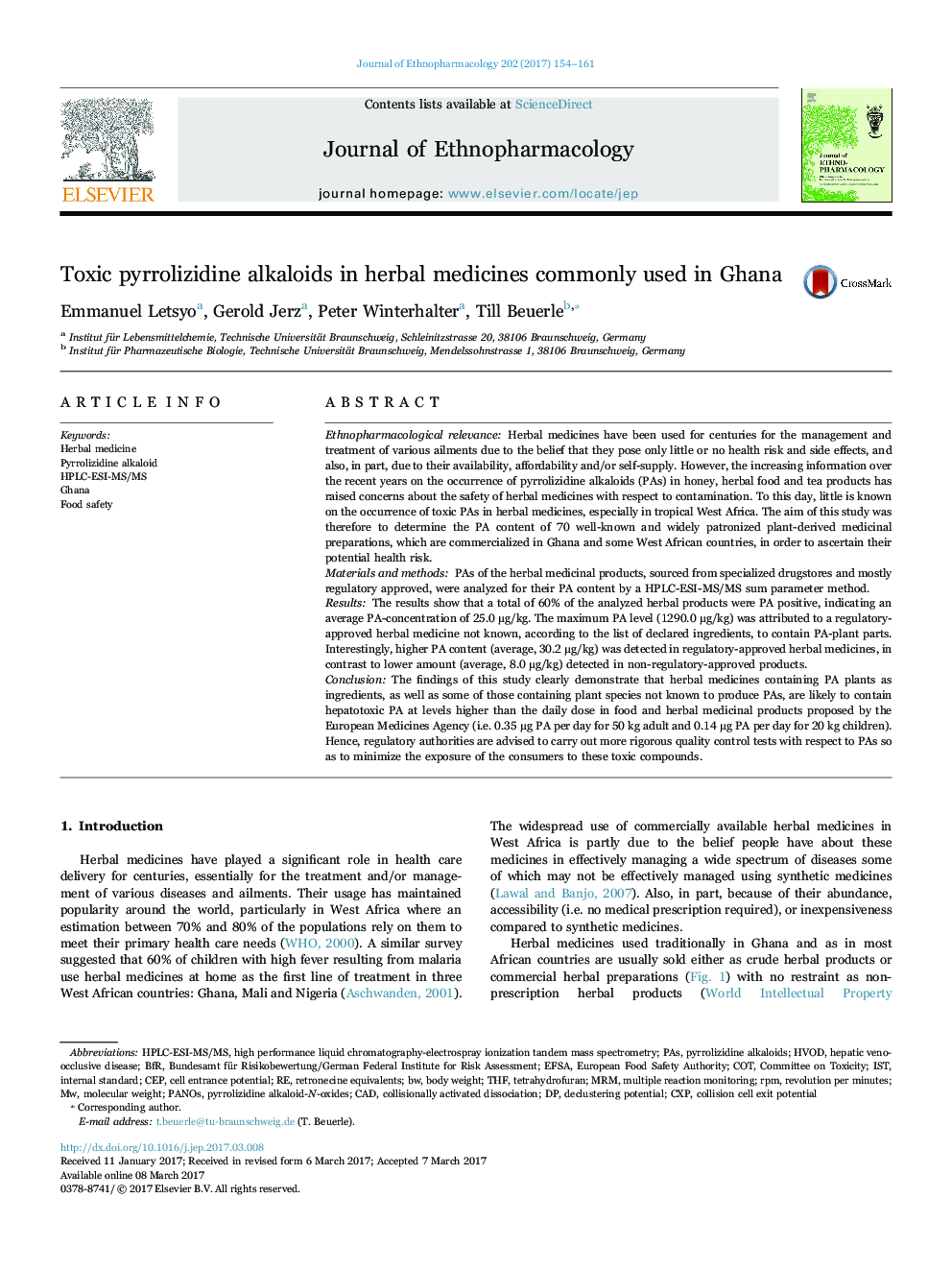| کد مقاله | کد نشریه | سال انتشار | مقاله انگلیسی | نسخه تمام متن |
|---|---|---|---|---|
| 5556114 | 1560360 | 2017 | 8 صفحه PDF | دانلود رایگان |
Ethnopharmacological relevanceHerbal medicines have been used for centuries for the management and treatment of various ailments due to the belief that they pose only little or no health risk and side effects, and also, in part, due to their availability, affordability and/or self-supply. However, the increasing information over the recent years on the occurrence of pyrrolizidine alkaloids (PAs) in honey, herbal food and tea products has raised concerns about the safety of herbal medicines with respect to contamination. To this day, little is known on the occurrence of toxic PAs in herbal medicines, especially in tropical West Africa. The aim of this study was therefore to determine the PA content of 70 well-known and widely patronized plant-derived medicinal preparations, which are commercialized in Ghana and some West African countries, in order to ascertain their potential health risk.Materials and methodsPAs of the herbal medicinal products, sourced from specialized drugstores and mostly regulatory approved, were analyzed for their PA content by a HPLC-ESI-MS/MS sum parameter method.ResultsThe results show that a total of 60% of the analyzed herbal products were PA positive, indicating an average PA-concentration of 25.0 μg/kg. The maximum PA level (1290.0 μg/kg) was attributed to a regulatory-approved herbal medicine not known, according to the list of declared ingredients, to contain PA-plant parts. Interestingly, higher PA content (average, 30.2 μg/kg) was detected in regulatory-approved herbal medicines, in contrast to lower amount (average, 8.0 μg/kg) detected in non-regulatory-approved products.ConclusionThe findings of this study clearly demonstrate that herbal medicines containing PA plants as ingredients, as well as some of those containing plant species not known to produce PAs, are likely to contain hepatotoxic PA at levels higher than the daily dose in food and herbal medicinal products proposed by the European Medicines Agency (i.e. 0.35 μg PA per day for 50 kg adult and 0.14 μg PA per day for 20 kg children). Hence, regulatory authorities are advised to carry out more rigorous quality control tests with respect to PAs so as to minimize the exposure of the consumers to these toxic compounds.
326
Journal: Journal of Ethnopharmacology - Volume 202, 18 April 2017, Pages 154-161
